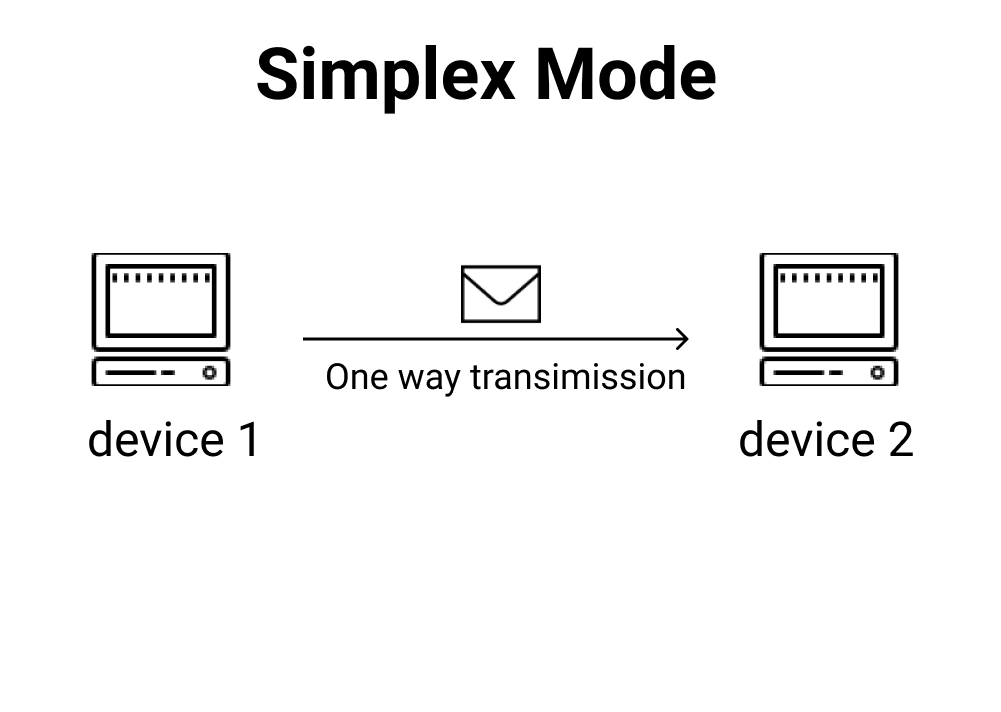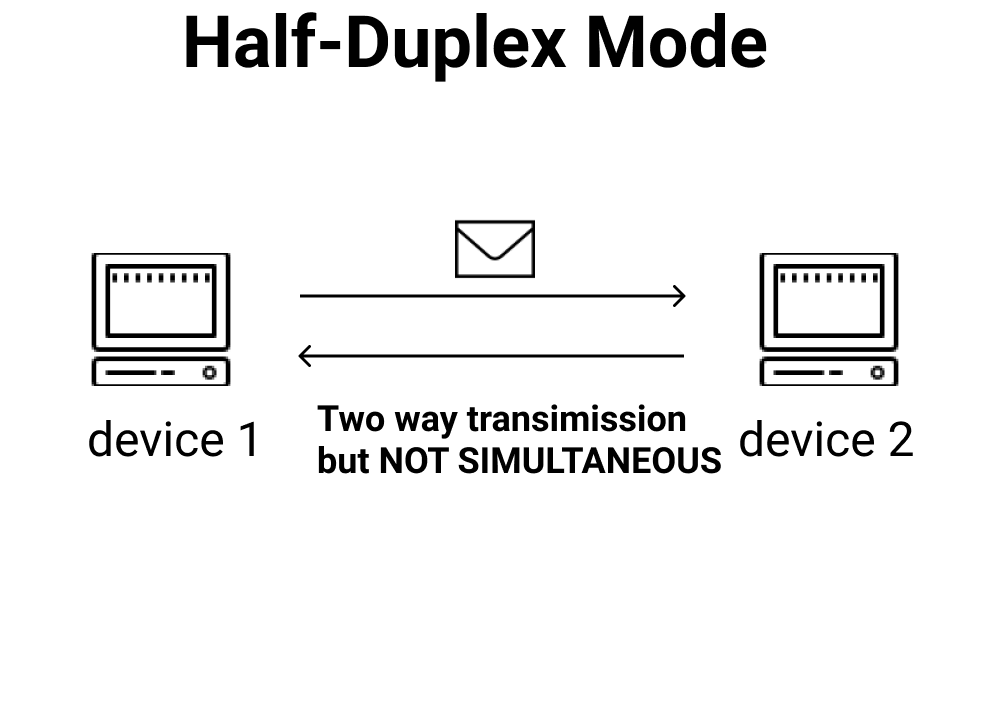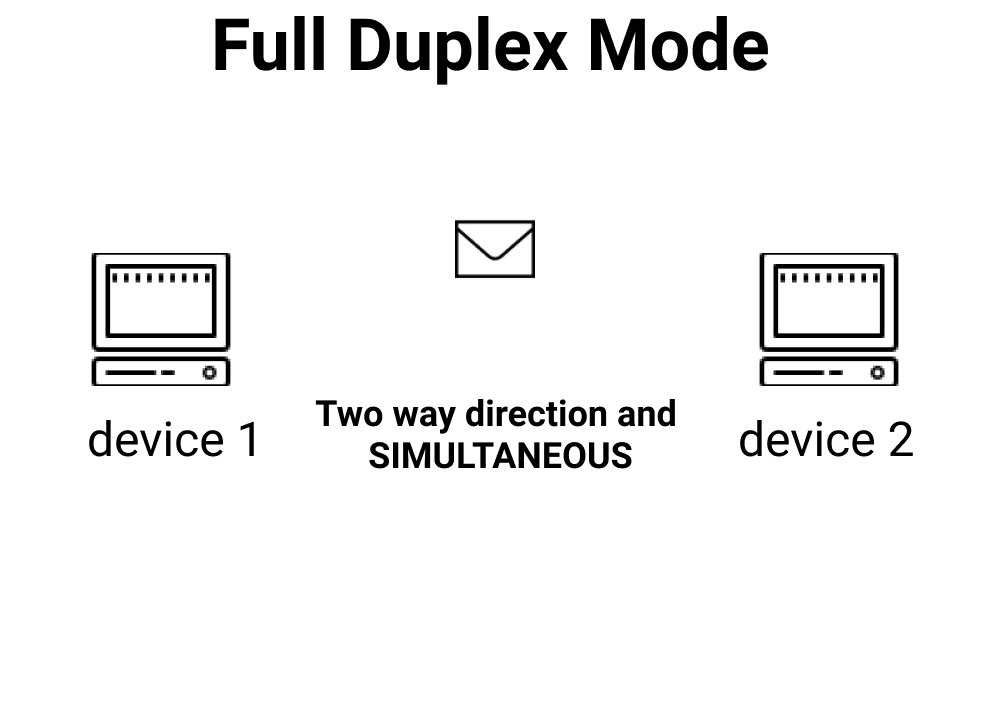What are simplex, half, and full duplex communication modes?
Communication is a process by which information is exchanged between individuals through a common system of symbols, signs, or behavior. When devices communicate, through a wireless media or cable, data is shared between the devices.
The transmission of data can happen in a number of different ways. There is one-way transmission of data, where only one device can send data. There is also two-way communication, where the two devices can both send data at the same time. Another possibility is that both devices can send data, but not at the same time.
In this shot, we take a look at the three different communication modes.
Simplex Mode
Simplex mode is a transmission mode in which information is sent in one direction only, also known as unidirectional. This means that information is only sent by one device through the channel and not both. One is only the sender and the other is only the receiver.
# Examples
Real-life examples of this communication mode include:
- Radio broadcasting
- Television broadcasting
- Computer to printer
- Monitor output
- Mouse/keyboard/joystick to computer
- Fire alarm system
- Loud speaker
Half-Duplex Mode
In half-duplex mode, both communication ends can transmit data, but not at the same time. This means that while one device is sending, the other device can only receive, and vice versa.
Examples
Real-life examples of half-duplex communication include:
- A walkie-talkie
- A two-way radio that has a push-to-talk button
- Browsing the internet (requests and responses)
- Universal Serial Bus (USB)
Full Duplex Mode
Full duplex mode allows the communicating devices to transfer information simultaneously. Unlike half-duplex, one of the devices does not have to wait for the other before replying. This means there is no delay in communication.
Examples
Some real-life examples of full duplex communicaton include:
- Video calls/video conferencing
- Audio calls
- Live chats



